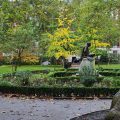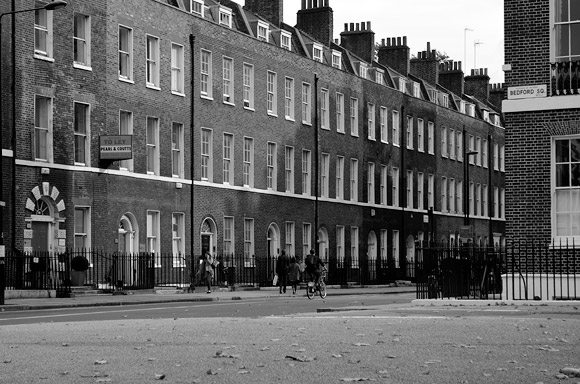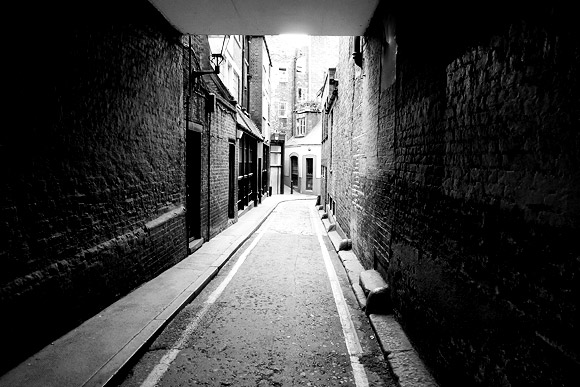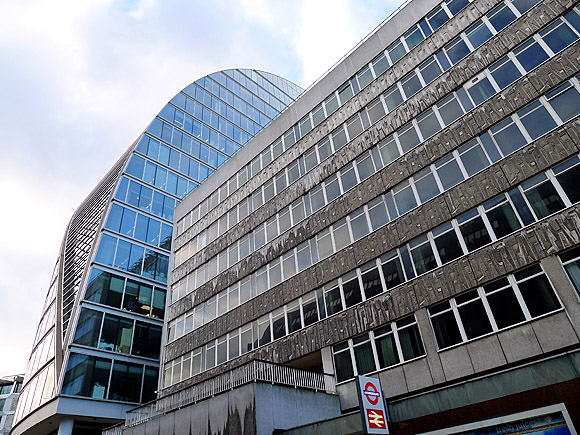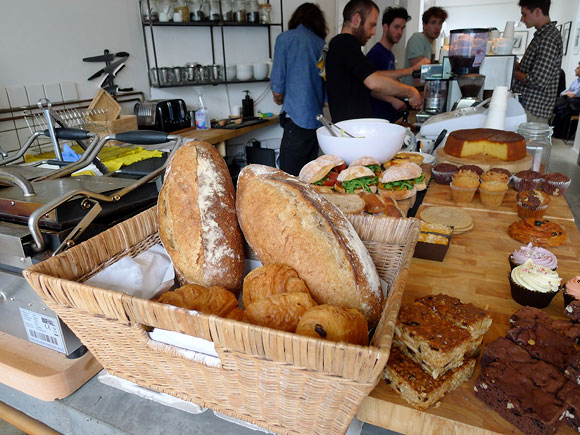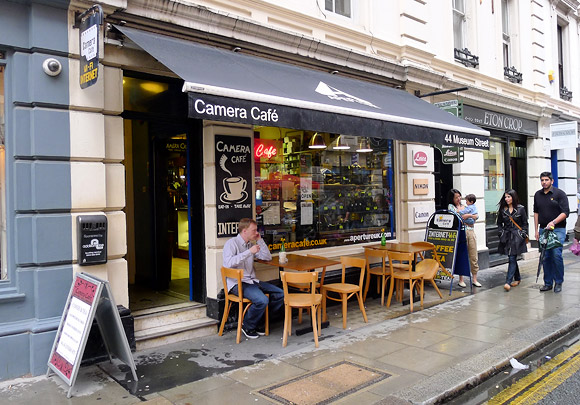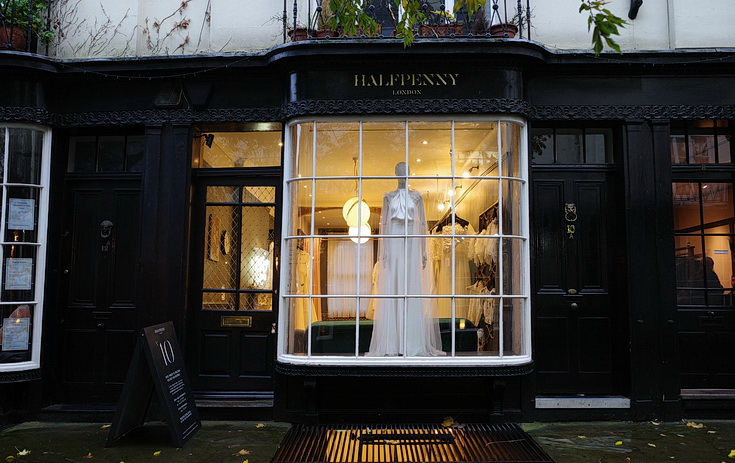
On my wanders through Bloomsbury in central London, I was delighted to stumble across the beautifully preserved Woburn Walk, which oozed Ye Olde atmosphere in the late afternoon, autumn drizzle.
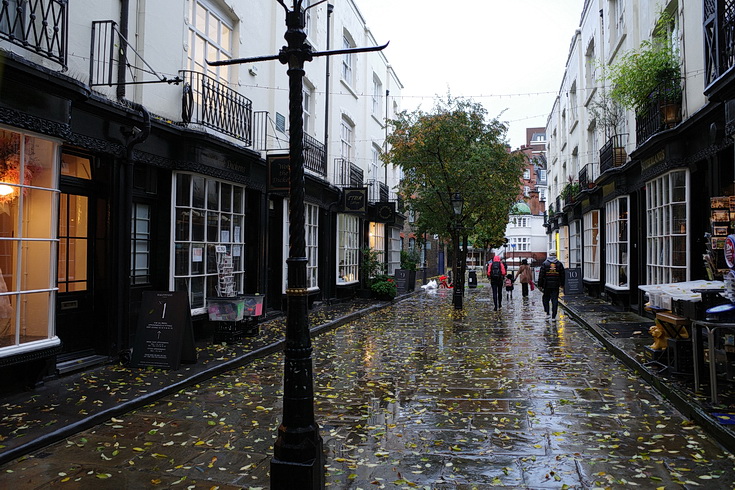
One of the first examples of a pedestrian shopping street in the Georgian era, the historic Bloomsbury walk was designed in 1822 by British master builder and architect, Thomas Cubitt.
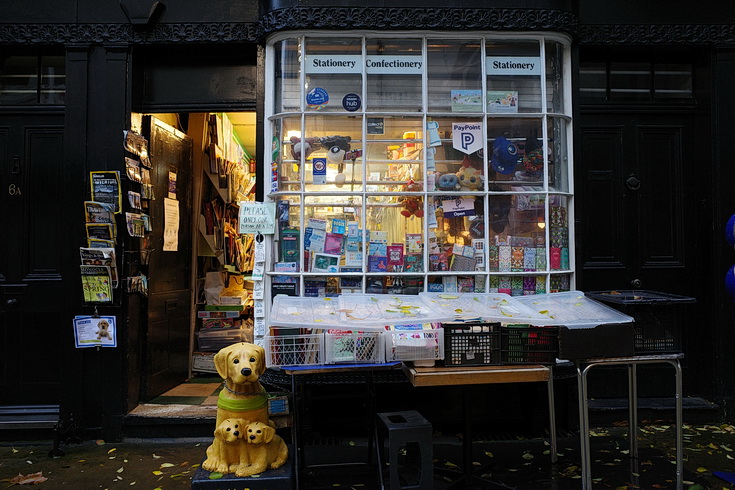
The street’s name comes Woburn Abbey, the main country seat of the Dukes of Bedford, who developed much of Bloomsbury.
The well-preserved thoroughfare includes the original black painted bow-fronted shops windows, and several of the buildings are Grade II listed.
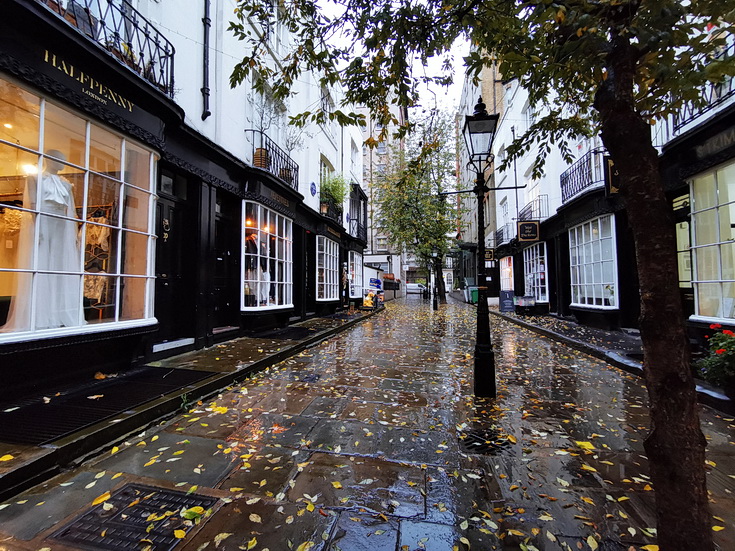
Although a short in length, the street has hosted two famous residents: from 1895 to 1919, the Irish poet, dramatist and Nobel Prize winner W. B. Yeats lived at what is now 5 Woburn Walk, while the novelist Dorothy Richardson lived opposite from 1905 to 1906.

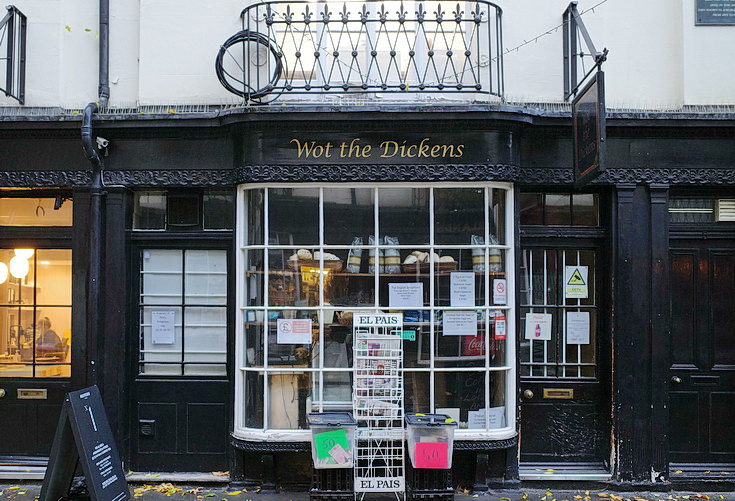
British History Online documents the architecture in great detail:
The shop fronts were designed with great skill. The window stood in the centre, flanked by doorways, and was the same shape in plan as the balcony over, projecting over the pavement to the level of the sill, beneath which were two shaped brackets.
Each window was divided by very delicate glazing bars into twenty-four panes, four panes high, and curved at each side. Over the whole ran an unbroken entablature, which followed the window curves, with twin pilasters between each house.
A single-moulded cornice, frieze (functioning as a lettered fascia) and an architrave with continuous anthemion ornament made up this most effective shop design. The doors were of four panels with rectangular fanlight above. The curved sill of each window was enriched with guilloche ornament.
Between each pair of doors was a wrought-iron scraper. The rainwater downpipes, with moulded heads, were neatly arranged in alternate recesses between the houses.
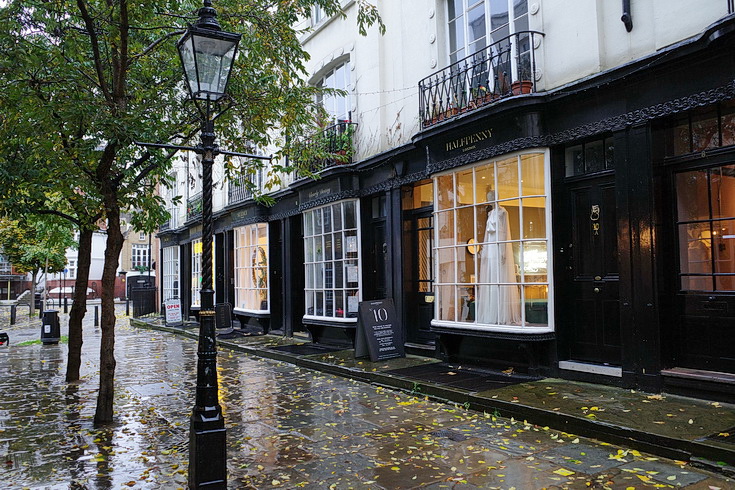
The Guardian included Woburn Walk in their Story of a Street article:
Another of my favourite places is a passageway just off Woburn Place called Woburn Walk, where there was a sandwich bar run by gloomy Italians with a plaque saying that WB Yeats had lived there.
What the plaque didn’t tell you was that that was also where Yeats lost his virginity, at the decidedly late-starterish age of 31.
He and Olivia Shakespear had to go to Heal’s specially to order a bed before finally consummating the relationship, and he found the experience – that of ordering the bed – deeply traumatic, since “every inch added to the expense”.
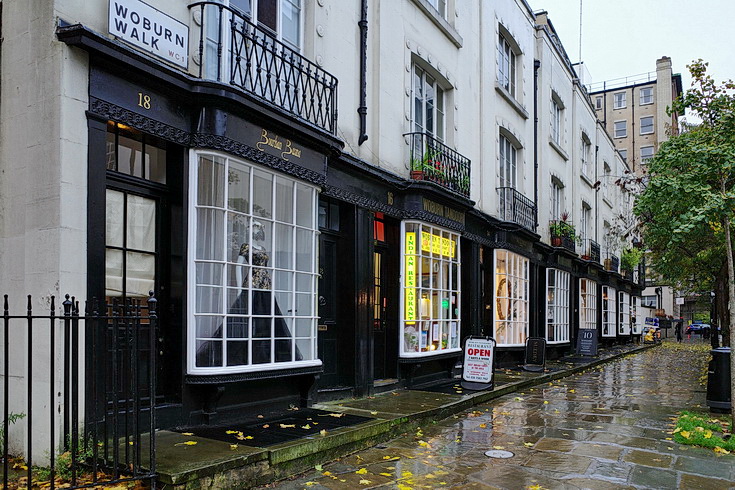
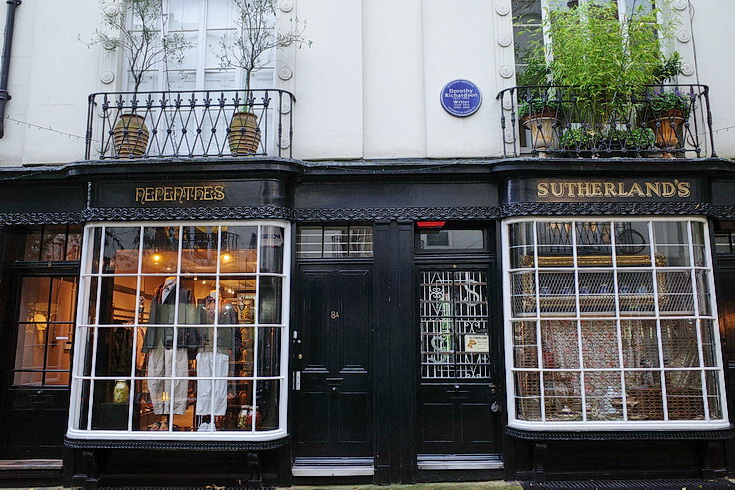
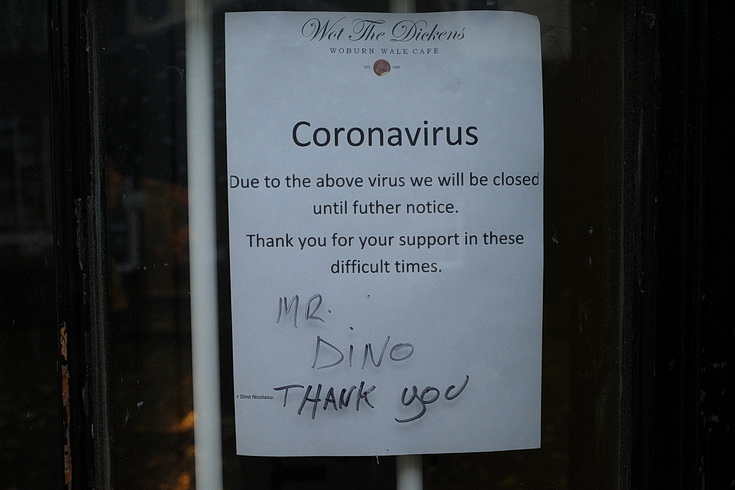
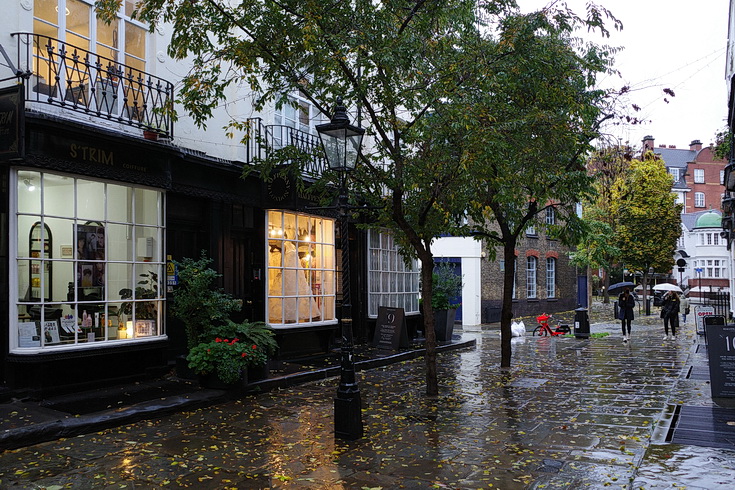
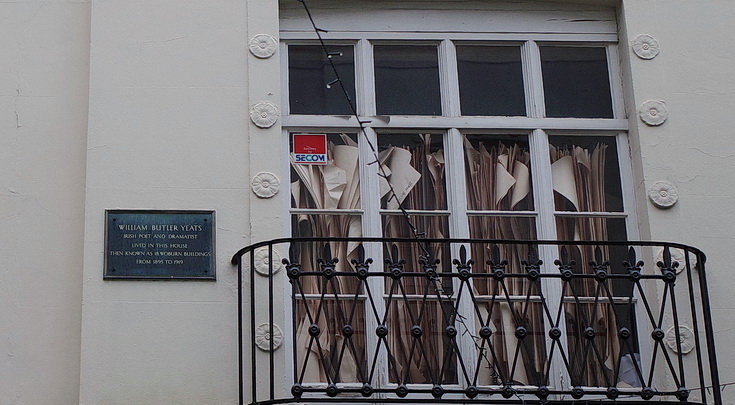
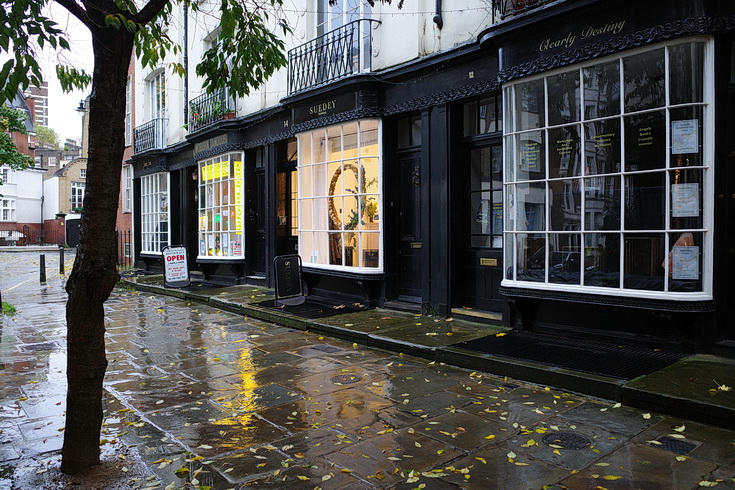
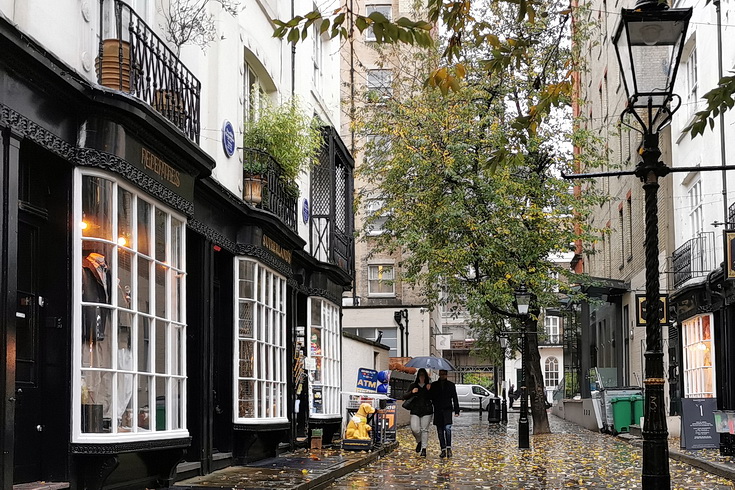
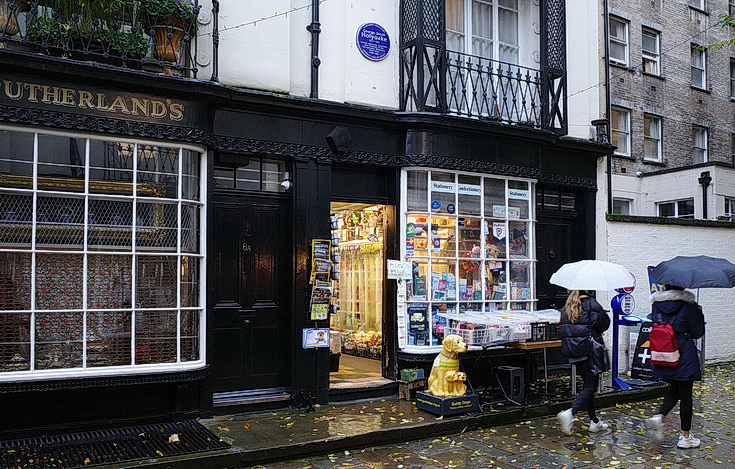
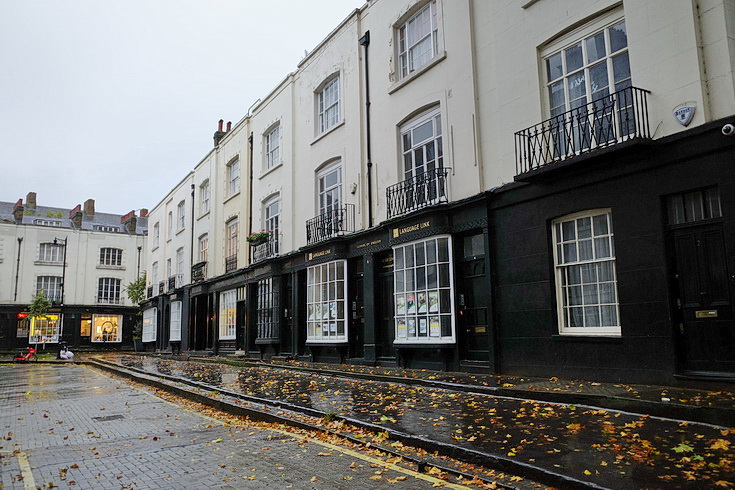
Above: Duke’s Road which leads to Woburn Walk.
Join the discussion
Bloomsbury, the Brunswick Centre, local attractions, news and chat


